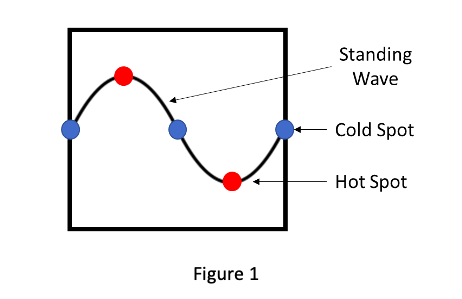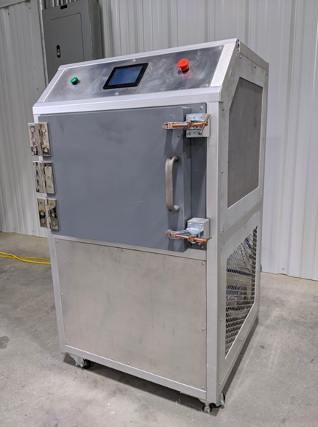
The use of microwave energy to sinter parts made from metal powders was first reported by researchers from Penn State University in 1999. They reported the ability to sinter a wide range of standard powdered metals from commercial sources using a 2.45 GHz microwave field, yielding dense products with better mechanical properties than those obtained by conventional sintering. Since 1999, a large amount of academic research has been conducted on microwave sintering of metal parts, in a variety of materials including Metal Matrix Composites, Austenitic (316L) and Ferritic (434L) stainless steel, Tungsten Nickel Iron Alloys, and others. Researchers have reported benefits such as reduced sintering time, increased density and more uniform grain size distribution, as well as improved properties at higher heating rates and lower energy consumption.
One would think that microwave sintering with its 20 year research history and validated process benefits would be in broad commercial use today; however, this is not the case. Current microwave heating processes, including sintering, are primarily based on multi-mode resonant technology. This technology has found enormous success in low power, domestic microwave oven applications due to its robustness and simplicity. The major challenge with this technology is the non-uniform distribution of microwave energy due to the standing waves that form inside the microwave cavity, which leads to non-uniform heating during sintering. The formation of standing waves inside the microwave cavity leads to the creation of hot and cold spots as shown in Figure 1.
Several methods including mode stirrers and turntables have been developed to improve microwave energy distribution in multi-mode resonant systems, but these methods are marginally effective when applied to a microwave sintering process. Since 2015, at least one other metal additive manufacturing company attempted unsuccessfully to develop a microwave assisted sintering furnace based on multi-mode resonant technology. Between 2017 and 2019, Metallum3D designed, built, and tested a microwave sintering furnace prototype based on multi-mode resonant technology. A picture of this microwave furnace prototype is shown in Figure 2.
After extensive testing, we were able to ascertain that multi-mode resonant technology is suitable for small scale microwave sintering experiments, but it is not suitable for large scale commercial microwave sintering applications. We determined that for metal additive manufacturing, a new type of microwave heating technology was needed, one that operates in a non-resonant mode and provides for uniform distribution of microwave energy within the microwave cavity.
Another challenge in the adoption of microwave sintering processes for metal additive manufacturing is material formulations. For extrusion based metal additive manufacturing, material formulations are based on those used in the Metal Injection Molding industry (MIM). These formulations require a time consuming debinding step, which limits the part size and thickness. To take advantage of the faster processing provided by microwave sintering, 3D printed parts need to go from the 3D printer directly to microwave sintering, with no debinding step. In this regard, parts that are 3D printed with a Binder Jetting process that uses 1% or less by volume of binding agent, are ideal candidates for a microwave sintering process.
Metallum3D is developing innovative solutions to solve the challenges that have prevented the commercial use of microwave sintering in metal additive manufacturing. We recently published a technical white paper titled “Homogeneous Heating in Microwave Sintering with Non-Resonant Slotted Waveguides and Granular Susceptor Material”. It is available for download at http://www.metallum3d.com.
Subscribe to Our Email Newsletter
Stay up-to-date on all the latest news from the 3D printing industry and receive information and offers from third party vendors.
Print Services
Upload your 3D Models and get them printed quickly and efficiently.
You May Also Like
The Dental Additive Manufacturing Market Could Nearly Double by 2033, According to AM Research
According to an AM Research report from 2024, the medical device industry, specifically in dentistry, prosthetics, and audiology, is expected to see significant growth as these segments continue to benefit from...
Heating Up: 3D Systems’ Scott Green Discusses 3D Printing’s Potential in the Data Center Industry
The relentless rise of NVIDIA, the steadily increasing pledges of major private and public investments in national infrastructure projects around the world, and the general cultural obsession with AI have...
AM Research Webinar Explores Continuum’s Sustainable Metal Additive Manufacturing Powders
Metal additive manufacturing (AM) powder supplier Continuum Powders is working to develop solutions that empower industries to reduce waste and optimize their resources. An independent life cycle assessment (LCA) of...
3D Printed Footwear Startup Koobz Lands $7.2M in Seed Round
California-based Koobz is focused on reshoring the U.S. footwear supply chain with advanced manufacturing processes, including 3D printing. The startup just announced that it has added $6 million to its...


































